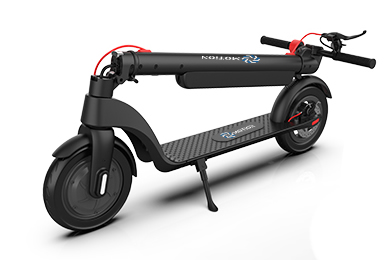More and more VMPs (Personal Mobility Vehicles) are appearing which, in most cases, are nothing more than different models of electric scooters and Hoverboards that are emerging on the market to meet the needs of users.
In addition, the existence of cheap electric scooters and types of Xiaomi electric scooters, or other popular brands, has caused them to be accessible to practically everyone.
The speed with which these vehicles appear has made the Administration have to act quickly to give them a legal framework or, at least, a minimum regulation of the DGT so that drivers of electric scooters can circulate normally with other drivers through our streets.
Among the types of electric scooters, the DGT does not consider that they can be considered vehicles as such due to their technical characteristics. In 2016 an instruction was published in this regard, but at that time any type of electric scooter for adults was not yet taken into account.
For this reason, the regulations are often left in the hands of municipal ordinances that, in most cases, consider the vast majority of types of skates as little less than toys or recreational vehicles, and even today there are no clear regulations about of its use.
During the reform process of the Road Safety Law, a basic electric scooter classification was established, which brings together vehicles of a lower rank than the traditional motor-powered ones.
Let’s see how many types of electric scooters we can find on the market.
The most common Electric Scooters are type A.
Toys for children
Within the types of skateboards and they were the first to appear. These are human- powered scooters or small vehicles with an electric motor.
The key is in their speed, since they barely reach 6 kilometers per hour and that is why they are allowed to circulate on sidewalks and parks; living with pedestrians as there is no risk of being hit with serious consequences.
Vehicles for personal mobility
The most popular and numerous electric scooters would be included here. They are devices with an electric motor that have a maximum speed of 25 kilometers per hour .
It includes vehicles such as electric unicycles, electric scooters, . It also includes the type of electric scooter type B since they can reach 30 kilometers per hour.
All personal mobility vehicles must have identification and a certificate from the European Union.
Do not worry, because it is the manufacturer who will provide you with this certificate without problems. If he doesn’t or refuses, you should consider whether you should buy the scooter from him.
These vehicles cannot circulate on the sidewalk; they must do it on the streets that have a speed limit of 30 kilometers per hour. And they cannot circulate at more than 25 kilometers per hour under any circumstances.
Here is the classification with the three types of personal mobility vehicles that exist:
• Type A: they are characterized by being platforms with one or two wheels and an electric motor that reach 25 kilometers per hour, weigh up to 25 kilos and can only transport one person. Within type A we find vehicles such as hoverboards, electric skateboards, traditional electric scooters and electric unicycles.
• Type B: these are electric scooters and segways that have a seat and that are only for one person. They do not exceed 30 kilometers per hour and weigh a maximum of 50 kilos.
• Type C (C0, C1 and C2): these vehicles have a considerable wingspan since they can weigh up to 300 kilos although they do not exceed 25 kilometers per hour. They can carry up to three people.
Hoverboards belong to group A. They became very popular in 2015.
Electric bikes
Both mechanical bicycles and electric bicycles are framed within this typology, that is, those that have a motor and those that do not. The regulation of bicycles does not change with respect to the one that already existed before establishing this classification.
Bicycles must circulate on bike lanes and on the road. They can only use crosswalks and sidewalks as long as their drivers are on the ground, eliminating any possible risk to pedestrians. They do not need license plates.
Category L1e
This typology includes any motorized vehicle that has a maximum speed of 45 kilometers per hour, whether it is an electric scooter, small scooter, whether it has a seat or not, and runs on gasoline. As long as it has that range of speed, it falls into this category.
This implies that vehicles that fall into this category have to be registered, take out insurance and their driver must have an AM license or higher to be able to drive it.
They will always circulate on the road, having prohibited the circulation on the sidewalks without exceptions.
Thanks to this typology, it is clearer to establish a regulation that affects some types or others, and even all. Therefore, if you have an electric scooter, you must be clear about what type of DGT it belongs to in order to know what are the regulations that affect it.
Do not forget that the municipalities have the power to define their own typologies and regulations, so it is essential that you also consult the municipal ordinances of your city.
At the end of the day, and until a state regulation is regularized, it is the municipal regulations that prevail when deciding whether or not you deserve a fine.
Do you have an Electric Scooter UK ? Do you know what type it is? Tell us in comments, we will love to read you. And if you have any questions, we will try to help you.
